Save Models
Model definition files are saved and shared via the Save dialog in Model. They can also be shared from the item's Actions Panel.
Content sharing is based on security roles, with predefined folders that allow role-based access. From the Save and Save As dialogs, you can save your model file to your own private domain, without sharing it, or you can share it with users who share your security roles, or you can specify the roles with which you want to share it.
Save and Save As
To save your model definition file, click Save above the canvas:
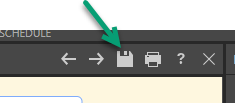
Alternatively, open the App Tab menu to save the model:

If the item was already saved, you can Save, Save as, Save & Close, or Save as new version:
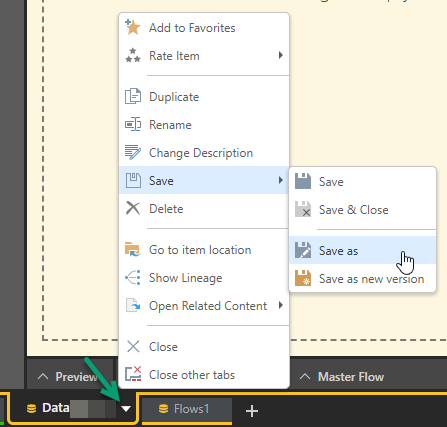
Save / Save As Dialog
Both the Save and Save As dialogs feature the following:
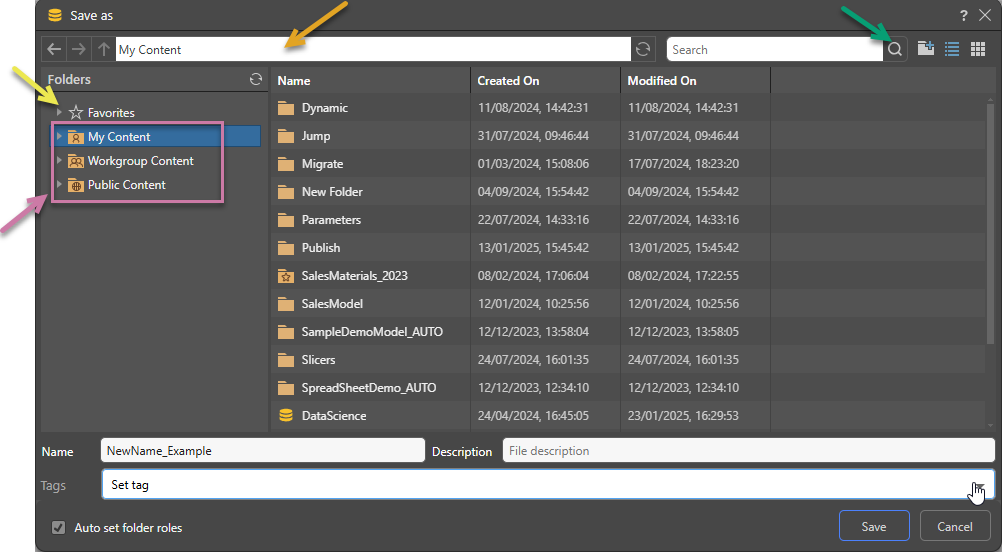
Folders
The Folders panel contains a Favorites shortcut (yellow arrow) and the folder tree (purple highlight). Navigate through the tree and select the folder that you want to save your item to.
Favorites
Use the Favorites option to access those folders that you have flagged as "Favorites." The Favorites option is not a folder; it is a shortcut that allows you to go to your most used or preferred folders without having to navigate the tree. When you access a Favorite folder in the Save dialog, you are saving the file to the location in the tree that you flagged as a favorite.
- Click here for more information about Favorites in the Content Manager
Folder Tree
You can choose where to save your content to in the folder structure. You are presented with those folders that you have WRITE access to. Once inside the folder tree, you can also access the folder navigation bar (orange arrow above) to more easily move around and add new folders to the tree on the spot (green arrow above).
- My Content: The content in this domain is private. You should save to this folder when you don't want to share your content with others yet. Note that Admins will be able to see this content.
- Workgroup Content: Group content is made READ and WRITE accessible to other users who share your security roles. Note that full write permissions are granted to users with access to the Workgroup folder.
- Public Content: Public content is made accessible to all user roles DEPENDING on the role security of the folder or item.
- Click here for more details about the folder structures
Folder Navigation
Navigate through the folder tree using:
- Mouse clicks.
- The back, forward, and up arrows.
- The search field to find the required folder.
The current folder or item location will be reflected in the breadcrumb trail (orange arrow above).
Metadata Fields
Name
In the Name field, enter the name by which you want to save the model file.
Description
Add a description, which will appear in the model file's Actions Panel.
Tags
Content tags are automatically applied when saving content. You can remove them, add more, or create new ones.
Auto set folder roles
By default, Pyramid automatically sets role access to items saved in the Public Content folder. If you want to set role access to your content item manually, clear the Auto set folder roles checkbox in the Save dialog (yellow box below):

Once the checkbox is cleared (green highlight below), you can click Next (blue arrow) to assign your roles:

Assign Roles to Public Content
Decide which roles should have which kind of permissions to the content being saved:
- Read: Users belonging to the selected role can open the content but cannot edit it.
- Write: Users belonging to the selected role can open the content and they can edit it.
- Manage: Users belonging to the selected role can open and edit the content item, and they can manage permissions to the content item. Admins can assign any role to the Manage permission. Non-admins can only assign roles to which they belong to the Manage permission.
Tip: Given that there can be many roles, you can use Search (green arrow below) to find roles by name, use the name filter to filter them by their starting letter (purple arrow), or manage the list using the sort and filter options on the columns (shown on hover).
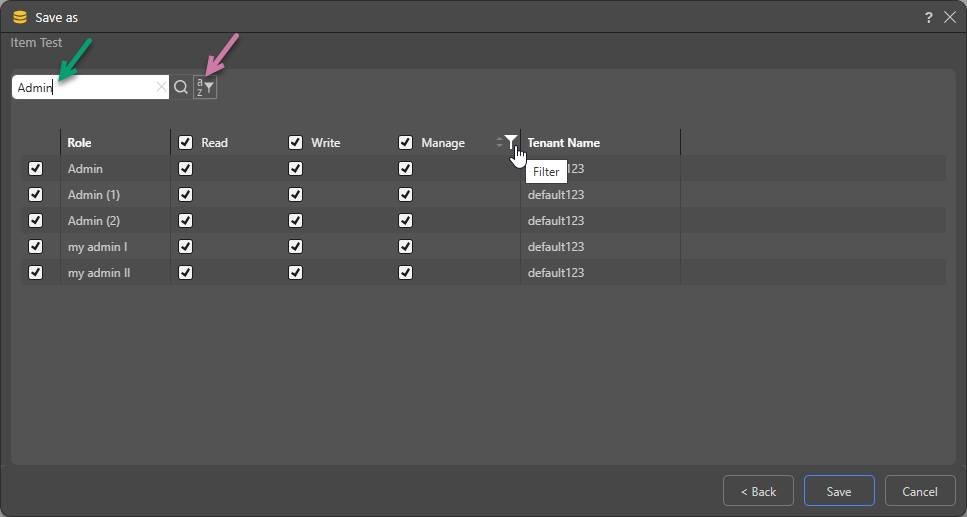
- Click here to learn about assigning roles to items during Save
- Click here to learn about assigning roles to the model file in the Content Manager
Closing Unsaved Items
You can close items at any time without saving them to the content system. When you close the unsaved item, you are prompted with a warning dialog:
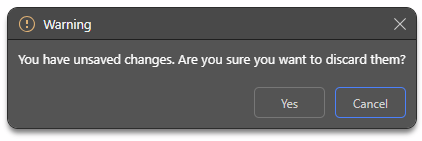
- Click Yes to close the app and discard any unsaved changes.
- Click Cancel to continue working.